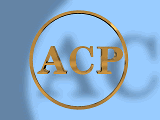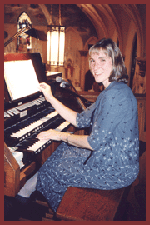American Catholic Press
16565 S. State Street, South Holland, Illinois 60473
|
||||||||||||||||||||||||
|
|
||||||||||||||||||||||||
|
by Archbishop Rembert G. Weakland, O.S.B Where are we in church music today? Such a question will bring a variety of emotional responses from any Catholic audience. That people are so concerned about the question of music in worship is an encouraging sign. Vatican II is achieving its objective; we have begun to understand that music is important. To move beyond our emotions and obtain an accurate and objective
insight into the state of church music today, it is helpful to recall
the story of church music before Vatican Council II, see what trends
have developed as a result of that Council, and then analyze options
for the future. In pursuing such an analysis our focal point must
be the parish, rather than specialized communities such as seminaries
or houses of religious. Church Music before Vatican Council II An examination of what was happening in church music before Vatican Council II is important for two reasons. First of all, there is now a tendency to look back nostalgically upon an idealized past that did not really exist. Secondly, it is necessary to realize that the roots of Vatican II, especially with regard to church music, go back to previous papal documents. The thrust of the liturgical reform in the last decades is the culmination of a century of preparation. The most important document in the history of church music, one that far surpasses anything published by the bishops at the Council, is the Motu Proprio of Pope Pius X (1903). In that enlightened statement the intrinsic relationship between music and worship is expressed in prophetic terms never since to be equaled: Music, because of its expressive, communicative nature, belongs to the fullness of the act of worship; it is holy, not by some intrinsic norm, but in virtue of its sensitivity to the words (as in Gregorian Chant and 16th century polyphony) and to the liturgical moment of which it is a part. The result of that document was a renewed interest in those qualities of music that make it fitting for liturgy. Putting it briefly, one could say that the sacredness of the sacramental encounter between God and his people demands music with those qualities that permit the transcendent dimension of the liturgical moment to shine through. Pope Pius X did not believe that this dimension could be present unless the music were aesthetically superior. The first half of this century, that is, the time between the Motu Proprio of Pope Pius X and Vatican II, had three main thrusts: (1) the purging from existing church music of "secular" pieces that were not musically bad, but that set up a whole set of associations that did not lead listeners to the centrality of the redemptive act of Christ, to the transcendent aspect of liturgy as distinct from other human events and acts; (2) a renewed effort to make Gregorian Chant "people's" music; (3) the creation for choirs of new Masses in Latin (Kyrie, Gloria, Credo, Sanctus, and Agnus Dei) that imitated the ancient polyphony but were not too difficult for parish use.
|
|||||||||||||||||||||||
|
||||||||||||||||||||||||

